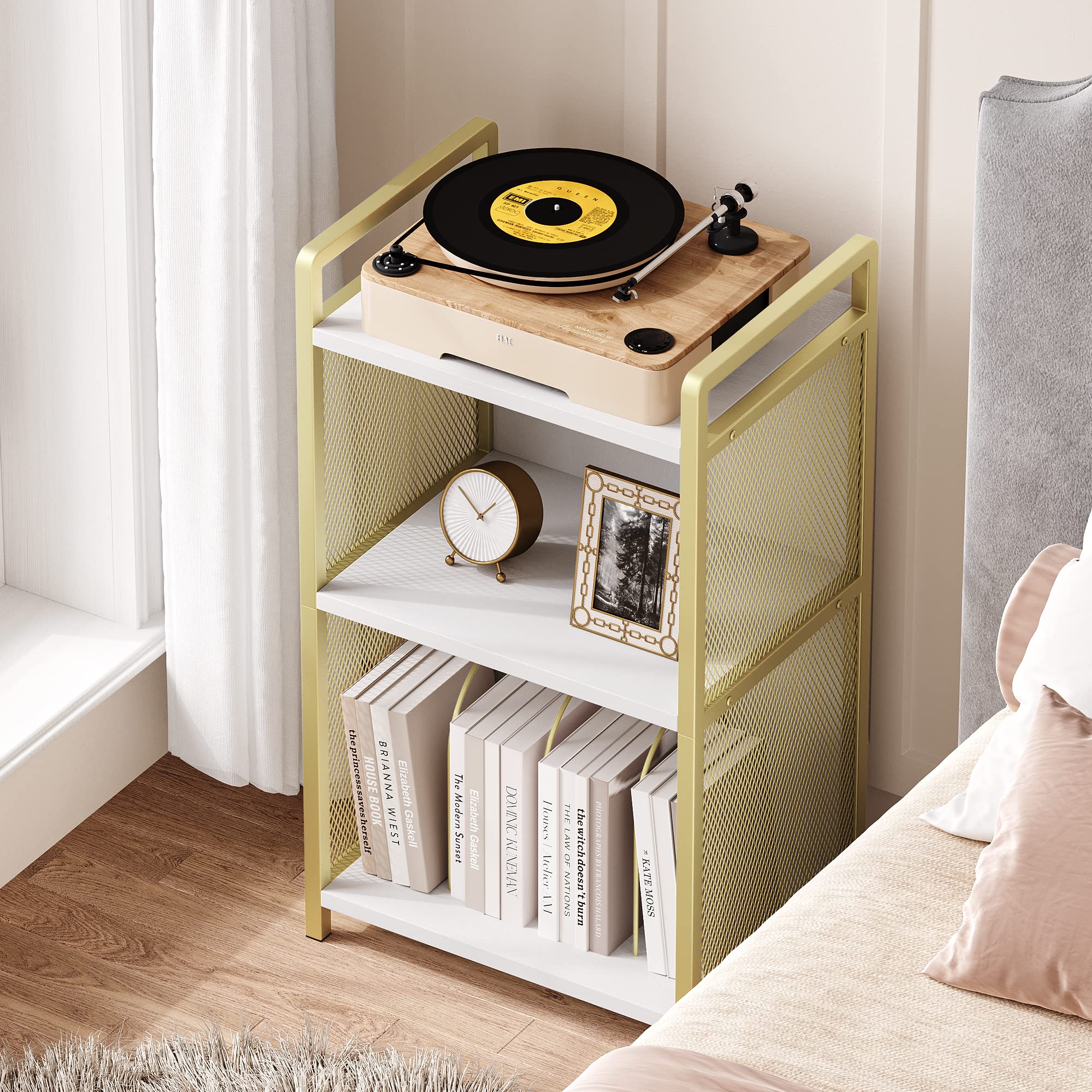
Record player stands, also known as turntable stands or console tables, have been around since the early 1900s. As technology and design evolved over the years, so did the record player stand. In this essay, we will explore the history of record player stands and their evolution.
Early record player stands were simple and functional, designed to hold the gramophone or phonograph. These early stands were often large and ornate, reflecting the cultural importance of music and entertainment in the early 1900s.
The design of record player stands changed significantly in the 1920s and 1930s with the introduction of radio and the electric record player. Stands became smaller and more compact, reflecting the shift towards more streamlined and modern design. They were often made of metal or a combination of metal and wood, with a more industrial and sleek appearance.
In the 1940s and 1950s, record player stands became more integrated into home decor.They often featured intricate details and carvings, reflecting the popularity of mid-century modern style.
The 1960s and 1970s brought significant changes to the design of record player stands. As the popularity of vinyl records and rock music grew, so did the demand for more functional and versatile stands. Many record player stands from this era were free-standing, with built-in speakers and storage for vinyl records. They were often made of plastic or metal, with a colorful and bold appearance.
The 1980s and 1990s saw a decline in the popularity of vinyl records and record player stands. However, there was still a devoted group of vinyl record enthusiasts who continued to use and appreciate record player stands.
In recent years, vinyl records have made a comeback, and as a result, record player stands have also become popular once again. The design and style of record player stands have evolved to reflect modern trends, while still maintaining a nod to the classic designs of the past.
Today, record player stands come in a variety of styles, materials, and sizes. They can be simple and minimalistic, or ornate and decorative. They can be made of wood, metal, glass, or a combination of materials. Many stands now include features such as built-in speakers, Bluetooth connectivity, and USB ports.
These stands allow for a more streamlined and space-saving solution while still providing a functional and stylish option for displaying and using your record player.
The evolution of record player stands reflects the changing trends in technology, design, and culture throughout the years. From the ornate and decorative designs of the early 1900s to the functional and versatile designs of the modern era, record player stands have remained an essential piece of furniture for music enthusiasts. As vinyl records continue to gain popularity, record player stands will likely continue to evolve and adapt to modern trends and technology.
In addition to the changes in design and style, the functionality of record player stands has also evolved over the years. Early record player stands simply served as a platform to hold the turntable, but as technology advanced, so did the features incorporated into these stands.
With the introduction of radio and electric record players in the 1920s and 1930s, record player stands began to include built-in radio receivers and amplifiers. This allowed users to listen to both records and radio broadcasts from the same piece of furniture. These multi-functional stands were often larger and more complex in design, with additional compartments for storing records and other audio equipment.
In the 1960s and 1970s, as the demand for higher quality sound grew, record player stands started to incorporate built-in stereo speakers. This eliminated the need for separate speakers and allowed for a more compact and integrated setup. Some stands even included storage compartments specifically designed to house vinyl records, making it easy for users to access and organize their collections.
In conclusion, the history of record player stands is a testament to the ever-changing landscape of technology, design, and culture. From simple platforms to multi-functional pieces of furniture, record player stands have adapted to meet the needs and preferences of music enthusiasts over the years. As vinyl records continue to experience a resurgence in popularity, we can expect record player stands to further evolve and incorporate new features that enhance the listening experience while maintaining a sense of style and functionality.